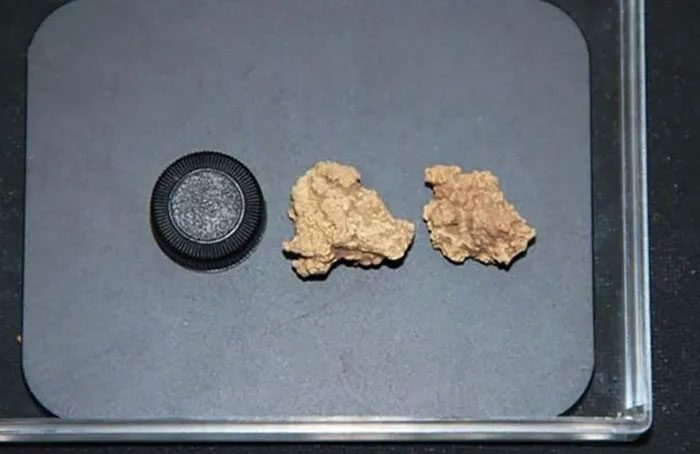These cheese fragments were placed around the heads and necks of mummies, possibly as a food reserve for the “afterlife.”
A decade after discovering well-preserved mummies in the Taklamakan Desert, researchers successfully analyzed DNA from this ancient cheese. This cheese represents the oldest known example ever found in archaeological records.

A mummy from the Xiaohe cemetery in the arid Tarim Basin, located in Xinjiang, China, is seen with kefir cheese scattered around its neck.
Analysis results indicate that the people of that time, belonging to the Xiaohe culture, knew how to produce cheese using bacteria to enhance their food. This discovery also provides important insights into how bacteria played a role in tracking the spread of cultural influences over many periods.
According to Professor Christina Warinner from Harvard University, the study published in the journal Cell opens a new door for research into ancient DNA, utilizing modern technology that scientists today can employ, something previously unimaginable.
Dr. Warinner explains that today, fermented foods are primarily made from a small number of commercially cultivated bacteria and yeast in laboratories, but few are aware of the traditional bacteria that humans used in the past to create essential foods like bread, cheese, beer, and wine.
A research team led by Chinese paleogeneticist Qiaomei Fu analyzed the DNA from the cheese and identified that it contains DNA from goats and cattle. They also discovered that the kefir bacteria, a popular cheese today, was present in the cheese 3,600 years ago.

The researchers collected animal and bacterial DNA from the kefir cheese found on mummies in the Tarim Basin. (Source: CNN)
The Xiaohe cemetery, where the mummies were discovered, has puzzled scientists with the unique combination of cultural and genetic traits of the residents. Despite being genetically isolated, these people still adopted new ideas and technologies from other civilizations.
The study also indicates that, unlike cheese-making methods in the Middle East and Greece, the Xiaohe people did not mix milk from various animal species when producing kefir.
This discovery helps scientists better understand how probiotic bacteria—a beneficial type of bacteria—have evolved over thousands of years. These studies not only illuminate ancient food processing methods but also provide insights into human interactions with the microbial world.
Ultimately, scientists believe that cheese and dairy products have played an important role in life for thousands of years and continue to be an essential part of culture and food today.



















































